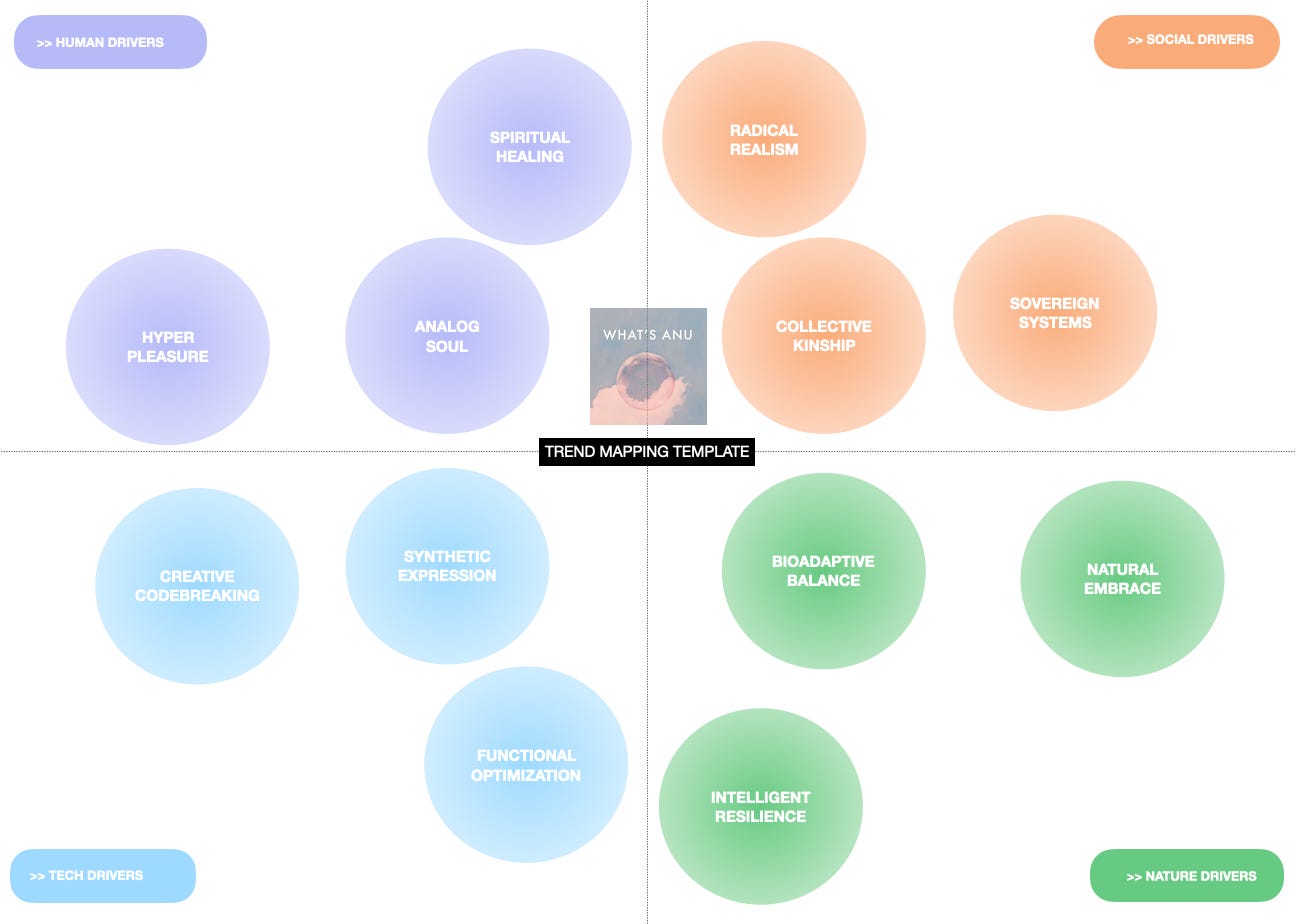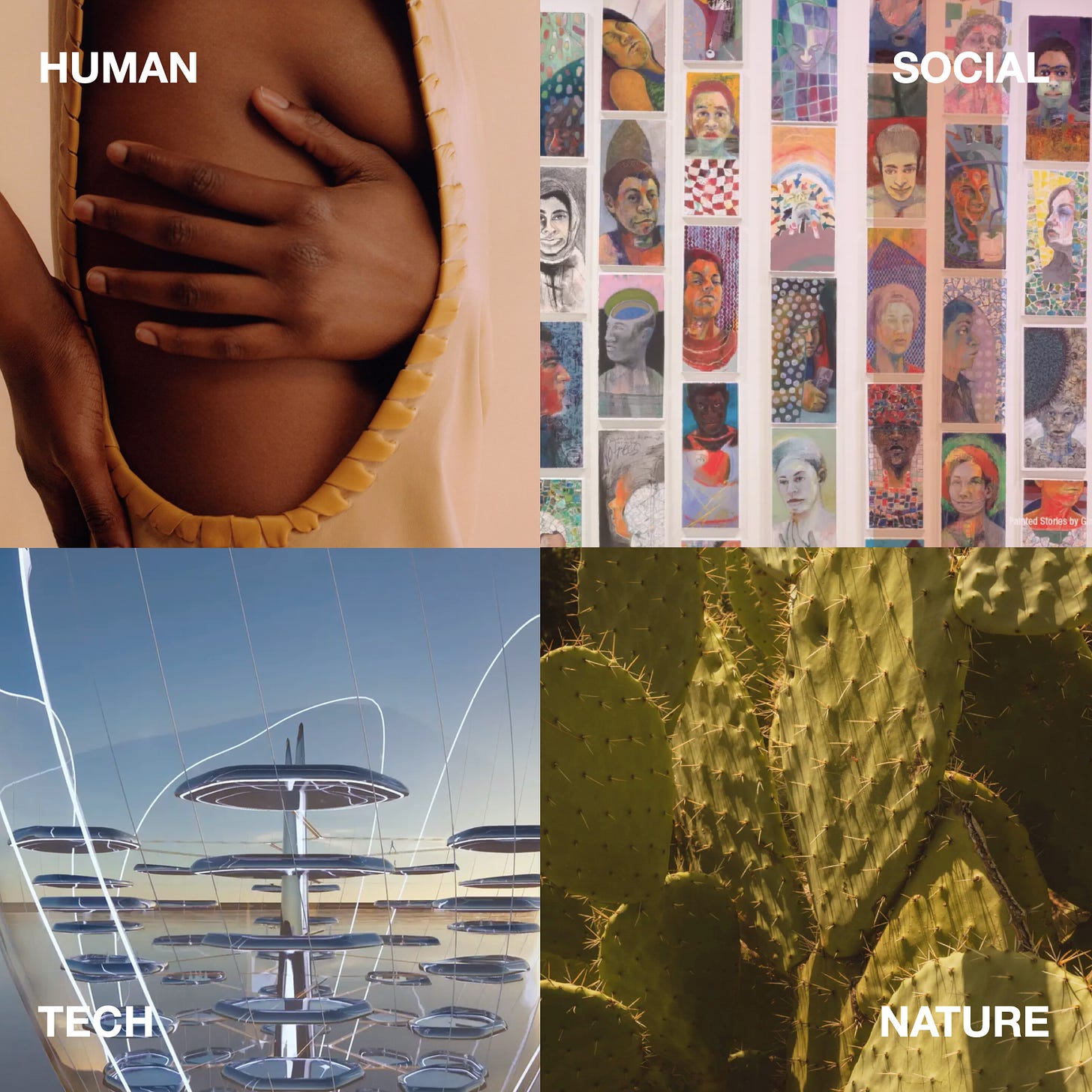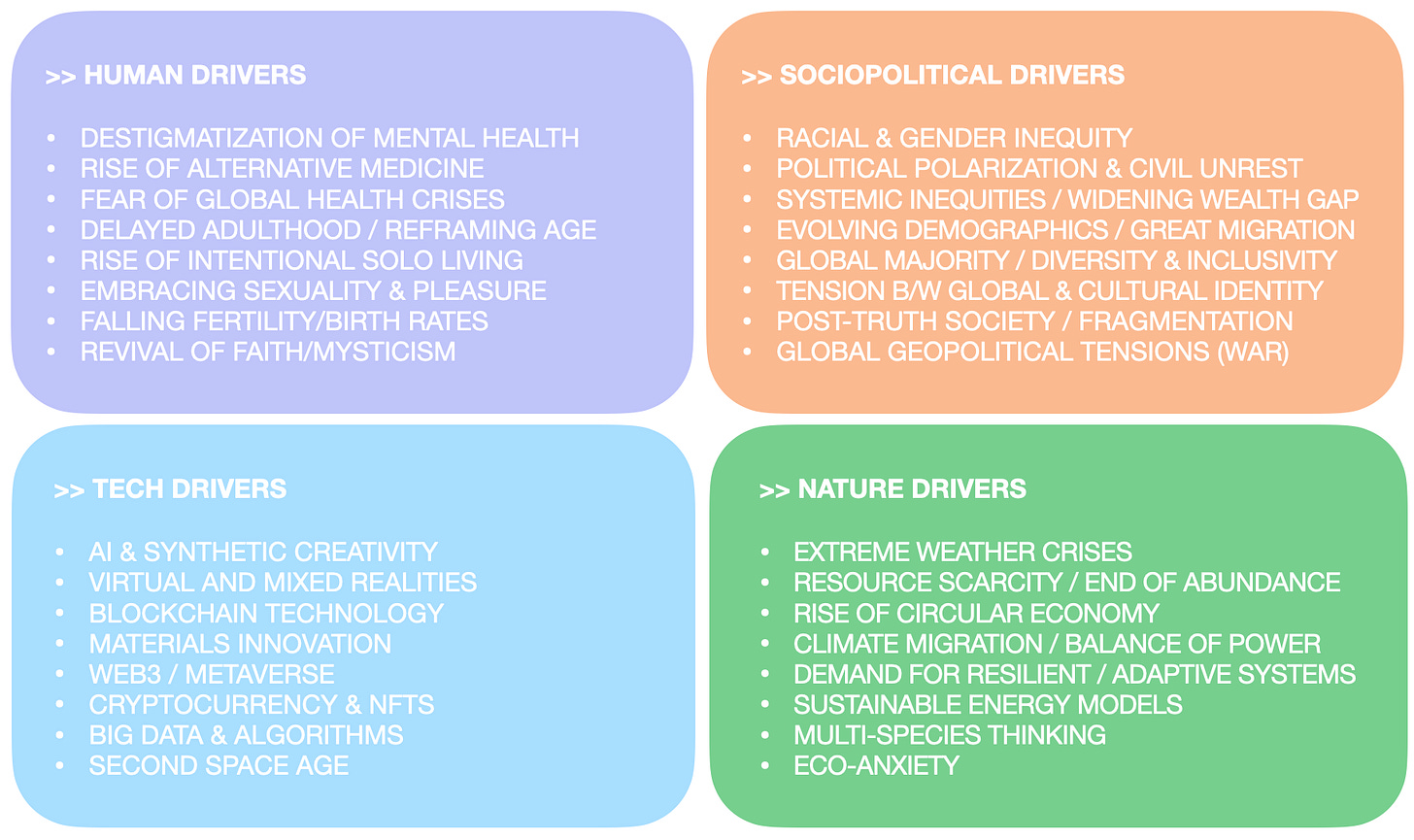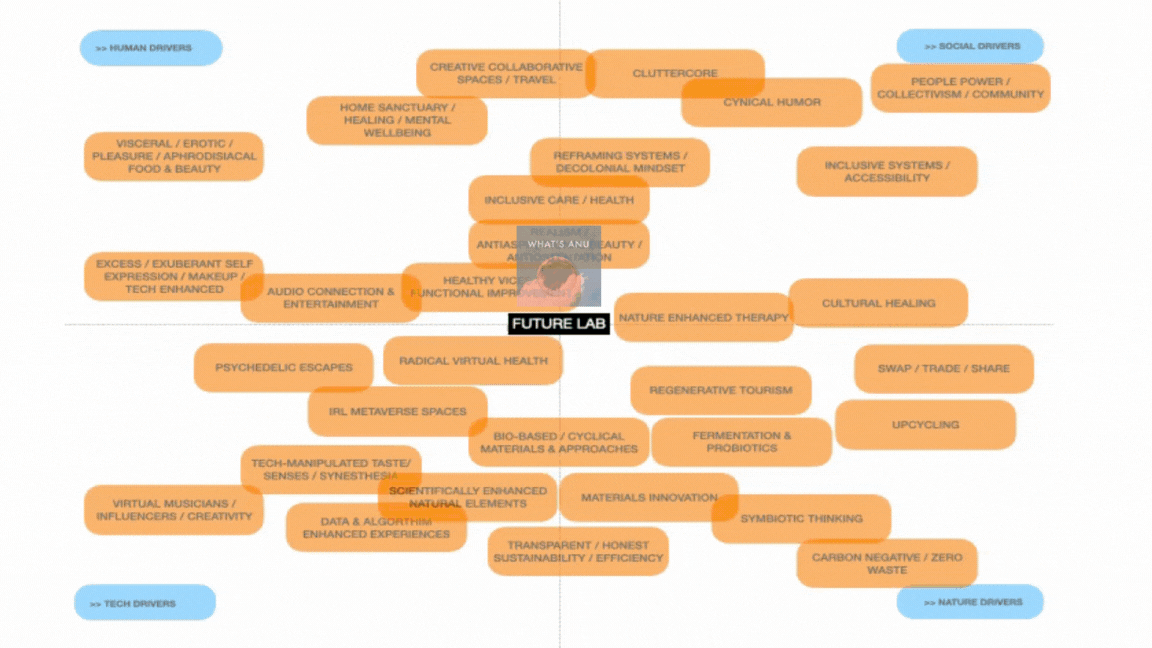Trends are trending, as you’ve probably noticed. Personally, I find this fascinating, but also overwhelming. The sudden overabundance of ‘trends,’ often without any real strategic perspective, both dilutes their value and increases the difficulty of making sense of what actually matters. Amidst this trend overload, I believe that structural frameworks and relational mapping can help us discern meaning.
By considering trends within the context of our larger cultural landscape, we can unlock their potential more effectively.
A comprehensive trends framework can be strategically leveraged to inspire innovative product design & innovation or build cultural relevance via brand marketing & communications. I’m referring to this approach as ‘trend strategy’ — it’s closer-in than than foresight strategy, but more future-facing than conventional brand and creative strategy.
Rather than adding more ‘trends’ to the noise, my approach focuses on drawing connections that elucidate meaning and enable action. Here’s how:
Methodology
I’ve developed my own strategic framework of cultural macrotrends, which has been slowly refined and adjusted over several years. It’s nothing groundbreaking, but it synthesizes several of the methods and perspectives out there already to create a simple and straightforward trend mapping system.
The foundation of most foresight methodologies is rooted in ‘drivers of change’ - these are ongoing macro shifts in global culture. The most commonly used framework to analyze drivers originates as PEST (Political, Economic, Sociocultural, Technological), now often evolved to STEEP (adding Environmental) and more recently STEEPW (adding Wellbeing). Almost every trend service and foresight consultancy uses their own proprietary variation — WGSN now calls it STEPIC, for instance. I’m partial to simplicity and prefer how OvN outlines four broad driver spaces: Human, Social, Nature, Technology. Below is an example of how some key drivers of change can be mapped across these spaces:
These drivers, and their intersections, are what influence the emergence of cultural macrotrends, or significant energy shifts. Almost all ‘trends’ that you might find in those popular annual trend reports can be mapped across the four driver spaces above, summarized as follows:
HUMAN :: wellbeing, emotion, expression
SOCIAL :: connection, belonging, community
NATURE :: sustainability, climate, survival
TECH :: digital, innovation, security
I performed this trend mapping exercise using annual reports from several leading trends & foresight resources, including Future Laboratory and WGSN, synthesizing and drawing connections to land on my own framework of 12 key cultural macrotrends - 3 per each of the above driver spaces. It’s a somewhat similar conceptual approach to Matt Klein’s incredible Meta-Trends, but this version much more subjective and simplified. Here’s a quick visualization of my process:
When distilling these 12 macrotrends back in 2020, my priority was to ensure that each has wide-ranging relevance and application potential across several outputs (visual identity, product innovation, marketing communications) and industries (fashion & beauty, architecture & interiors, food & beverage). My macrotrends do not usually change annually - the overarching themes will often remain relevant for several years, and I don’t believe in constantly renaming them for the sake of newness. But, they are continuously evolving spaces, within which new specificities and microtrends will consistently emerge to push boundaries. Functionally, my macrotrend framework provides a simple structural foundation upon which to map incoming cultural signals:

By mapping newly emerging cultural signals within the above framework, relational analysis enables us to quickly and easily understand the significance of a potential emerging microtrend within the context of our larger cultural landscape. Essentially, helping to making sense of the trend overload we’re all experiencing.
With this newsletter, I’m hoping to share my work-in-progress thinking and research as I track and synthesize cultural signals throughout the year. Nearly everything I discuss will circle back to the macrotrend framework outlined in this post. I’m excited to share this iterative process in an open forum for the first time and look forward to seeing how things evolve!
Addendum: For more on applying this framework, read How to Decode All Those Trend Reports







This is such a chef’s kiss breakdown of trend fatigue and strategy. Love how Anu acknowledges the paradox of trends being overwhelming yet still crucial for cultural relevance.
From a marketing girlie POV: brands NEED this kind of structured approach. Too many are out here chasing microtrends with zero long-term thinking, and it’s giving ✨desperation✨ instead of strategy. The Human-Social-Nature-Tech framework? So digestible. Like, if brands actually mapped their campaigns this way instead of hopping on every "core" aesthetic without context, we’d have way fewer cringe attempts at Gen Z engagement.
Also, the acknowledgment that macrotrends don’t need to be renamed every year just to feel new? THANK YOU. Trend-washing is real, and this feels like an antidote. Definitely bookmarking this for future Gen Z brand campaigns because this is the kind of structure that makes marketing feel intentional, not just reactive.
TL;DR: We need more of this in brand strategy. Less chasing, more meaning. 🔥
What a great framework. Many thanks for sharing this with the world. As a trend report writer, I have become acutely aware of the deluge of trend reports out there. I am loving your approach and plan to create my own framework to organise my thoughts and to help me process/place the trend reports that I come across. Another area of concern is how good is AI at writing these trend reports. I just finished an eleven page trend report. I am about to ask Perplexity AI to write the same report to see what it comes up with.